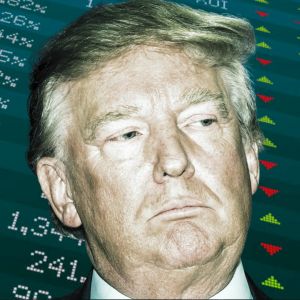Trump’s $150 billion immigration crackdown is shrinking the foreign-born workforce
3 min read
The labor market that President Donald Trump keeps pointing to as proof of his economic genius is running into a wall, one built by his own immigration crackdown. Foreign-born workers, who have played a major role in filling jobs across multiple industries, are disappearing fast. For the third month in a row, the foreign-born labor force shrank, even though the U.S. added 147,000 jobs in June. This is happening as Trump pushes his $150 billion “Big Beautiful Bill,” a legislative beast loaded with new cash for border enforcement, more deportations, and extra funding for detention centers. According to Politico, it’s the largest immigration enforcement effort in decades, and it’s now colliding head-on with the needs of the U.S. job market. White House says native-born workers will fill gaps Inside the West Wing, officials are brushing off concerns. The logic from Trump’s Council of Economic Advisers Chair Stephen Miran is that there’s a large group of unemployed Americans ready to work if the right incentives are in place. “There’s plenty of labor supply waiting to be brought in by the right incentives,” Miran said in an interview, adding that the jobless rate for 20-to-24-year-olds is over 8% and over 14% of working-age teenagers are out of work. Miran pointed to new tax cuts on overtime and tighter rules for Medicaid recipients as tools that might drive these workers back into jobs. But others in the economic world are not buying it. Daniel Zhao, senior economist at Glassdoor, said, “If the job market slows, then we should expect economic growth to follow.” He’s one of many economists arguing that the current U.S. workforce, especially native-born, can’t fully replace the gap left by missing immigrant labor. The concern is that if immigration slows down too much, job growth can’t keep up, even if the unemployment rate stays at its current 4.1%. Federal Reserve Chair Jerome Powell made the same point to lawmakers last month. “When you significantly slow the growth of the labor force, you will slow the growth of the economy,” Powell said. “Growth will slow, and actually is slowing, and that’s one of the reasons.” Economists warn of long-term slowdown The bigger issue is what happens next. A report from Deutsche Bank sent to clients this week suggested that the “breakeven rate” of job growth could fall to 50,000 jobs a month, way lower than the levels seen during Joe Biden’s presidency when immigrant labor was climbing. If that rate drops and job creation stalls, it would mean slower GDP growth. Trump has been clear he sees the labor gains under Biden as fake, driven by “an unchecked flow of undocumented immigrants.” That’s why he’s doubling down on deportations. His immigration czar Tom Homan said this week, “We need more agents to arrest them. We need more beds to hold them. And we need more transportation contracts to move them out of the country.” On Tuesday, Trump visited a Florida immigrant holding facility nicknamed “Alligator Alcatraz,” where new operations are ramping up. So far, that agenda hasn’t crushed job numbers. But it’s already shrinking the size and share of foreign-born workers in the economy. And the sharp drop in migrant encounters at the southwest border shows that the labor pipeline is drying up. The Congressional Budget Office has also flagged this. It projected that slowing immigration would weaken long-term output, even though it could boost wages slightly. A 2024 CBO report said the immigration surge after the pandemic had a positive effect on economic growth while leaving inflation almost unchanged. A separate study released Wednesday by the American Enterprise Institute, which leans conservative, warned that if net migration flatlines in 2025, it could shave 0.3 to 0.4 percentage points off GDP. That’s a huge hit, especially when growth is already slowing. Even Trump himself has shown signs of worry. He recently told aides that farmers and hospitality business owners are pressing him about how they’ll find workers under these new rules. Those industries depend heavily on foreign-born labor, and the options to replace them are thin. Miran admitted in the interview that “weaker numbers” may show up for a while. But he insisted it’s not proof of a broken system. The administration’s position is that once the changes kick in, more Americans will enter the workforce. Economists say that’s wishful thinking. KEY Difference Wire helps crypto brands break through and dominate headlines fast

Source: Cryptopolitan



